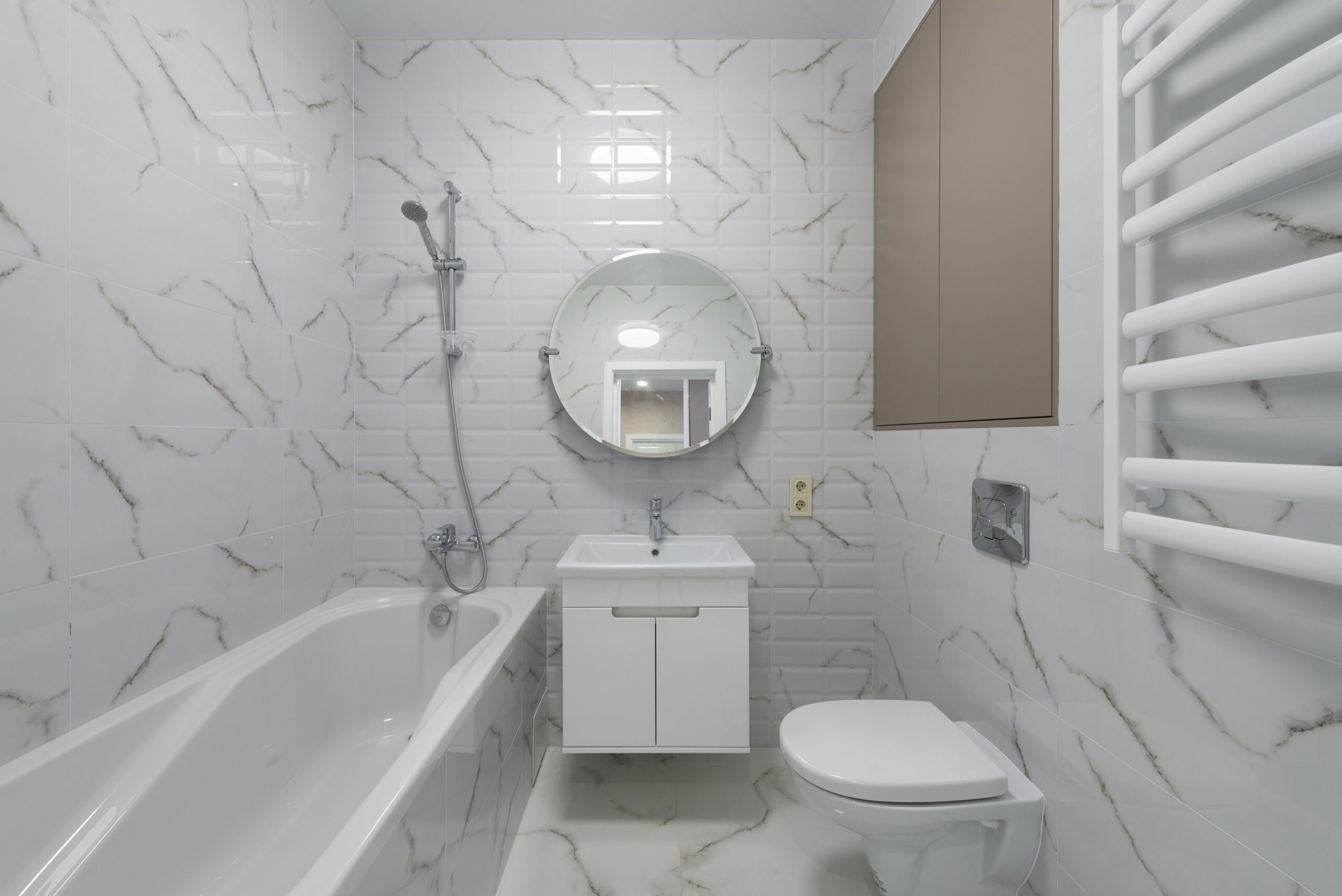Introduction
Among the various key activities in a house is cleaning bathroom floor tiles. Bathroom floor tiles often bear the brunt of moisture, grime, and soap scum, requiring regular attention to keep them looking their best. In this article, we’ll explore five expert tips for cleaning bathroom floor tiles to help you achieve sparkling results. Fortunately, with the right approach and techniques, cleaning bathroom floor tiles becomes a straightforward task.
Table of Contents
1. Gather Your Supplies
Prepare all the items and supplies you will require before beginning the cleaning process. This typically includes a bucket, mop, scrub brush, microfiber cloths, a gentle pH-neutral cleaner or tile-specific cleaner, and protective gear like gloves. Having everything prepared beforehand streamlines the cleaning process and prevents interruptions.
2. Sweep Away Surface Debris
Start by removing any loose dirt, hair, or debris from the bathroom floor tiles. Using a broom or vacuum cleaner with a brush attachment, sweep or vacuum the entire surface thoroughly. Pay attention to corners, edges, and grout lines where dirt tends to accumulate. This initial step prevents loose particles from getting trapped in the cleaning solution later, ensuring a more effective clean.
3. Choose the Right Solution for Cleaning Bathroom Floor Tiles
Selecting the appropriate cleaning solution is important to ensure that your bathroom floor tiles are cleaned effectively without causing any damage. pH-neutral cleaners are specifically formulated to maintain a neutral pH level, typically around 7, which makes them safe for bathroom tiles. Look for products labeled as pH-neutral or tile-specific cleaners when shopping for your cleaning supplies.
Harsh chemicals such as bleach, ammonia, and acidic cleaners are detrimental to both the appearance and lifespan of your bathroom floor tiles. These chemicals cause fading, discoloration, or even etching on certain tile surfaces, particularly those made of natural stone like marble or travertine. Additionally, strong chemical fumes can be harmful to your health, especially in enclosed spaces like bathrooms. Opting for milder alternatives ensures a safer and more sustainable cleaning process.
You can easily create your own tile cleaner using common household ingredients. A simple yet effective homemade solution involves mixing equal parts water and white vinegar in a spray bottle. Vinegar is mildly acidic and serves as a natural disinfectant, making it ideal for tackling soap scum, mineral deposits, and mold or mildew stains. Additionally, you can add a few drops of essential oils like tea tree oil or lavender oil for a pleasant scent and added antibacterial properties.
Before applying any cleaning solution to the entire bathroom floor, it’s advisable to perform a patch test in a discreet area to ensure compatibility with your tiles. Choose a small section of the floor, preferably near the corner or under a cabinet, and apply a small amount of the cleaning solution. Wipe it away with a clean cloth after a few minutes.
Check for any adverse reactions such as discoloration, etching, or changes in the finish. If the test area looks unaffected, you can proceed with confidence, knowing that the cleaner is safe for use on your tiles.
4. Scrub Gently but Thoroughly
Once you’ve prepared the cleaning solution, it’s time to tackle the grime on your bathroom floor tiles. Dip a mop or scrub brush into the solution and begin scrubbing the tiles in a circular motion, working from one corner of the room towards the exit. Pay special attention to areas with visible stains, soap scum buildup, or grout discoloration. While it’s essential to scrub thoroughly, be mindful not to apply excessive pressure, especially on delicate tile surfaces.
5. Rinse and Dry
After scrubbing the tiles, it’s crucial to rinse away any residual cleaner to prevent streaks or film buildup. Fill a clean bucket with warm water, and use a separate mop or cloth to rinse the tiles thoroughly. Change the water as needed to ensure you’re not spreading dirty water back onto the floor. Once rinsed, use dry microfiber cloths or towels to remove excess moisture from the tiles and grout lines. Proper drying helps prevent water spots and keeps your bathroom floor tiles looking immaculate.
Conclusion
With these expert tips, maintaining clean and sparkling bathroom floor tiles becomes a manageable task. By following a systematic approach, using gentle yet effective cleaning solutions, and paying attention to detail, you can achieve impressive results and prolong the lifespan of your bathroom tiles. Incorporate these techniques into your regular cleaning routine to enjoy a fresh and inviting bathroom environment that you can be proud of.


1 thought on “5 Expert Tips for Cleaning Bathroom Floor Tiles”